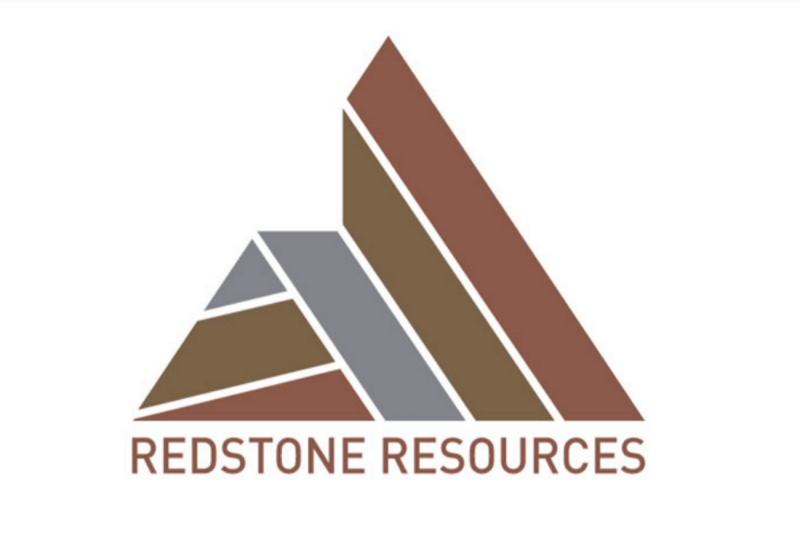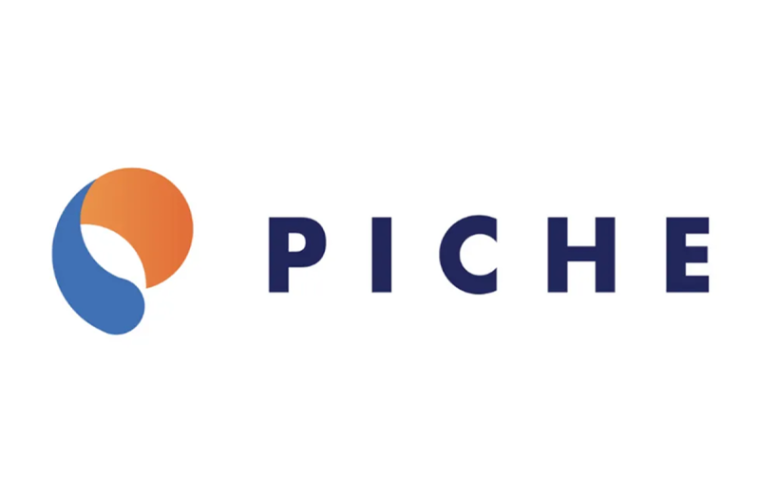

Overview
The electrification transition is well underway and has spurred a growth in demand for rare metals, such as lithium and base metals, including nickel and copper, which most clean technologies require. The overall sentiment for these battery metals remains healthy and optimistic, even amid global economic turmoil.
Australia is supporting this growth in demand through its mining-friendly, tier-1 jurisdictions. The country is a world leader in producing and exporting a plethora of metals and minerals, including iron, copper, lithium, nickel, bauxite and gold. Australia produces significant amounts of 19 in-demand minerals from more than 350 operating mines. The Musgrave Province contains a Mesoproterozoic crystalline basement terrain that reaches across the shared borders of Western Australia, the Northern Territory and South Australia. The terrain has significant deposits of several essential metals, including nickel, platinum group elements (PGEs), copper, gold, lead, zinc, chromite, and rare earth elements (REEs). Yet, much of Musgrave remains underexplored, especially for the base metals the world now needs.
Redstone Resources (ASX:RDS) is a base and precious metals exploration company, exploring its 100-percent-owned, highly prospective West Musgrave Project, which includes the Tollu Copper deposit, located in the West Musgrave Province of Western Australia. The company’s West Musgrave Project is located proximal to BHP’s world-class Nebo-Babel nickel-copper-PGE sulphide deposit and Succoth copper (nickel, palladium) deposit, and Nico Resources’ Wingellina nickel-cobalt project. Redstone also has other pending tenement applications prospective for nickel and copper in the same region. The company is led by a management team with expertise in geology and mineral exploration, business development and corporate law, creating confidence in the team’s ability to capitalize on its assets.
The unique Musgrave terrain has already drawn the interest of notable miners, such as BHP. BHP is progressing with the development of its Nebo-Babel nickel-copper-PGE sulphide deposit, which has been estimated to have a resource of 390 million tonnes grading 0.33 percent copper and 0.30 percent nickel, for 1.2 million tonnes of contained nickel metal and 1.3 million tonnes of contained copper metal (Mea + Ind + Inf – 2012 JORC). Final regulatory approval to begin construction of the Nebo-Babel mine has been granted. Other discoveries and deposits in the area, such as the Wingellina nickel-cobalt deposit, indicate the potential of the West Musgrave region to become a significant base metal jurisdiction.
Redstone’s flagship, 100-percent-owned West Musgrave Project is situated between these two deposits — approximately 40 kilometres east of BHP’s Nebo Babel nickel-copper-PGE deposit and 50 kilometres west-southwest of Nico Resources’ Wingellina nickel-cobalt deposit. Redstone’s West Musgrave Project is highly prospective yet largely underexplored. The asset has the right geological and structural setting for large magmatic nickel-copper sulphide deposits, volcanic-hosted massive sulphide (VHMS) deposits and other large intrusive related hydrothermal systems.
Location of Redstone’s West Musgrave Project, which includes the Tollu copper deposit, in relation to the world-class Nebo-Babel Ni-Cu-PGE deposit.
The 100-percent-owned Tollu Copper Vein deposit, located within the West Musgrave Project, has a JORC-compliant indicated and inferred resource estimate of 3.8 million tonnes grading 1 percent copper, for 38,000 tonnes of contained copper with a cut-off of 0.2 percent. There is also a current estimated conceptual exploration target*, suggesting a potential for up to 627,000 tonnes of copper at Tollu. (*conceptual exploration target ranges from 31 to 47 million tonnes of mineralization at 0.8 to 1.3 percent copper, containing 259,000 to 627,000 tonnes copper.)
Outside Australia, Redstone Resources is an emerging battery metals explorer and has been building its portfolio of lithium and other critical mineral assets in Canada.
In May 2023, the company signed an exclusive option agreement to acquire 100 percent interest in the Attwood Lake Area Lithium Properties in Northwestern Ontario. The properties are considered highly prospective for lithium and/or rare element pegmatites.
Results from the Phase 1 Exploration Program at Attwood Lake showed numerous pegmatite outcrops. The program consisted of a helicopter‐supported geological mapping and sampling program for lithium and rare‐earth-element-bearing pegmatites. Results from the 209 rock grab samples collected indicate elevated Li is present across the project.
In July 2023, Redstone Resources entered into another exclusive option agreement to acquire 100 percent interest in the Radisson East and Sakami Projects located in the prolific James Bay Lithium District in Quebec, host to several advanced lithium projects and new lithium discoveries in Canada including:
Winsome Resources Ltd (ASX: WR1) Cancet Project (~100 kms east); andQ2 Metals Corp (TSXV: QTWO) Mia Lithium Project (~40 kms southeast).
These projects have a combined area of 90 square kilometres and cover more than 50 kilometres of highly prospective greenstone belts with coincident lithium‐in‐lake anomalism and are host to several known pegmatite occurrences and outcrops.
Prospectivity analysis and multispectral analysis recently undertaken by Redstone Resources on Radisson East and Sakami has identified a significant number of high priority lithium-caesium-tantalum (LCT) pegmatite target areas requiring follow up exploration.
Redstone Resources also recently entered into a 50/50 joint venture agreement with Galan Lithium (ASX:GLN) to acquire 100 percent of the highly prospective suite of lithium projects that include the Camaro, Taiga and Hellcat Projects in the James Bay Lithium Province in Quebec. Redstone will be the manager of the joint venture which covers 5,187 hectares of tenure. The joint venture also secured an option to acquire 100 percent of the PAK South and PAK Southeast Lithium Projects comprising 1,415 hectares in Ontario’s Electric Avenue near Frontier Lithium’s PAK Lithium Project.
An experienced management team leads Redstone with decades of experience in the mineral resources sector, with expertise in mineral exploration, mining operations and corporate finance.
Company Highlights
Redstone Resources is an Australia-based mineral exploration company exploring highly prospective properties for copper and nickel in the West Musgrave region of Western Australia.The West Musgrave region has already drawn the interest of miners who have made significant discoveries, including the world-class Nebo-Babel nickel-copper-PGE sulphide deposit and the Wingellina nickel-cobalt deposit.Redstone’s flagship West Musgrave Project is located near these existing projects, only 40 km west of BHP’s Nebo-Babel deposit, indicating the potential of the company’s tenure.The company owns 100 percent of the West Musgrave Project, which includes the Tollu Copper vein deposit.It has the right geological and structural setting for large magmatic nickel-copper sulphide deposits, VHMS deposits and other large intrusive-related hydrothermal systemsThe Tollu Copper vein deposit is proof of a significant hydrothermal system in the project area.The Attwood and Radisson East and Sakami Project acquisitions complement the company’s West Musgrave copper-nickel project and its strategy to increase exposure to the growing global battery metals and explore for critical minerals in high demand. A Phase 1 exploration program conducted on the Attwood project has identified numerous pegmatite outcrops with sample assay results indicating elevated lithium is present across the project.Several high priority exploration targets have been confirmed from recent prospectivity analysis and multispectral analysis undertaken over the Radisson East and Sakami Projects. A strong management team leads the company with decades of experience in the resources sector.
Key Projects
The West Musgrave Project
The West Musgrave Project covers 237 square kilometres of highly prospective yet underexplored terrain. The asset is 40 kilometres east of the world-class Nebo-Babel nickel-copper-PGE sulphide deposit owned by BHP, and contains suitable geological structure and settings for nickel-copper deposits. Redstone plans to continue the exploration of the asset to follow up on recent drilling and exploration results which identified numerous prospective targets.
Significantly, recent drilling at 7.5 km northeast of the Tollu Copper Vein deposit has confirmed for the first time the presence of mafic-ultramafic intrusions on the project, which are potential host and/or source rocks for nickel-copper-PGE ± cobalt mineralisation. This confirmation is significant for Redstone especially considering the western boundary of the project area is only 40 kms east of the BHP-owned world-class Nebo Babel nickel-copper-cobalt-PGE deposit and may also be a potential explanation for a source of the high grade copper at Tollu.
The Tollu Copper Vein Project
Redstone’s Tollu Copper Vein deposit is located within the broader West Musgrave Project and has already produced promising drilling results. Tollu hosts a giant swarm of hydrothermal copper-rich veins in a mineralized system covering an area of at least 5 square kilometres. Copper mineralization is exposed at the surface and forms part of a dilation system within and between two major shears.
Redstone has defined a JORC 2012 resource estimate for Tollu of 3.8 million tonnes grading 1 percent copper, for 38,000 tonnes of contained copper and 0.01 percent cobalt, which equates to 535 tonnes of contained cobalt. However, the company considers that this estimate may be far greater with further drilling.
Drilling results from Redstone Resources’ most recent exploration program continue to deliver outstanding copper results for the Chatsworth and Forio prospects at the Tollu Copper Vein deposit.
At Chatsworth, RC drill hole TLC205 intersected 11 metres at 1.2 percent copper from only 29 metres downhole, extending the previously intersected high‐grade copper lens a further 20 metres towards the surface.
Together with the previous drilling, TLC205 has shown that the targeted high grade copper lens at Chatsworth is up to 26 metres thick (downhole), has a copper grade always over 1 percent copper and extends over 140 metres vertical from TLC205 to its deepest intersection to date in TLC188 at 174 metres-184 metres downhole. No drilling has tested beneath the intersection in TLC188 and so this significant, up to 26 metre thick (downhole) vertically long high-grade copper lens remains open at depth.
Previous intersections of the same high‐grade copper lens intersected in TLC205 include:
TLC188 ‐ 10 m at 2.51 percent copper from 174 m downhole including 3 m at 4.71 percent copper from 175 m downhole; TLC189 ‐ 26 m at 1.46 percent copper from 61 m downhole including 1 m at 5.1 percent copper from 84 m downhole; TLC033 ‐ 5 m at 2.21 percent copper from 100 m downhole; andTLC034 ‐ 15 m at 1.39 percent copper from 136 m downhole including 3 m at 3.67 percent copper from 122 m downhole.
E-W Cross-section of high grade copper lens at Chatsworth Prospect, Tollu Copper Deposit. Recent intersection in RC drill hole TLC205 is shown along with intersections from 2021 drilling in TLC188 and TLC189 as well as intersections in historical drilling, RC drill holes TLC033 and TLC034
Recent drilling has also delivered further high-grade intersections at Forio, including the highest Cu grade ever intersected with 1 m at 18.5 percent copper from 18 m downhole in RC drill hole TLC203.
Drilling completed at Forio in late 2022 RC drilling campaign at Tollu were aimed at testing the continuity along strike of a zone of high grade copper lenses at Forio identified in previous drilling.
The high grade Cu intersections at Forio include:
8 m at 4.1 percent copper from 13 m downhole depth (TLC203) including 1 m at 18.5 percent copper from 18 m downhole.4 m at 1.2 percent copper from 45 m downhole (TLC203)6m at 1.47 percent copper from 80 m downhole (TLC201).
The high grade copper intersections in RC drill holes TLC201 and TLC203 extend the zone of high grade copper lenses at Forio along strike north and south for at least 60 m continuous.
Long-section of RC drill holes TLC201 and TLC203 recently drilled to test for extension of the high grade copper mineralisation intersected in TLC181, TLC153 and TLC173 in previous drilling. Cross-section is drawn along strike N-S of the Forio vein system and looking towards the east
The significant drilling intersections of high‐grade copper mineralisation at both the Chatsworth and Forio Prospects (dating back to 2017) at Tollu are yet to be included in the existing JORC 2012 Tollu resource estimate, which suggests there may be opportunities in the Tollu resource yet to be realised.
Attwood Lake Lithium Project
Geologist exposes pegmatite outcrop beneath lichen.
The Attwood Lake lithium project is located approximately 115 kilometres east‐southeast from the community of Pickle Lake in northwestern Ontario. Geologically, the project forms part of the Neoarchean English River subprovince of the Superior Province. It straddles or is located within a few kilometres of the boundary to the Uchi subprovince, which is located to the north. The English River subprovince is an Archean gneiss belt of mostly metasediments and sedimentary derived‐orthogneisses. Reconnaissance bedrock mapping by the Ontario Geological Survey (OGS) in 2016 identified largely gneissic metasediments in the western part and along the eastern margin of the property, while the central part is dominated by muscovite‐bearing, peraluminous granitic rocks including some metavolcanic and migmatized supracrustal rocks. Mapping identified muscovite‐bearing pegmatites, mostly in metasediments near their contact with the granitic rocks, a setting that is favorable for potential lithium pegmatites.
Results from the Phase 1 Exploration Program at Attwood Lake showed numerous pegmatite outcrops. The program consisted of a helicopter‐supported geological mapping and sampling program for lithium and rare‐earth-element-bearing pegmatites. Results from the 209 rock grab samples collected indicate elevated Li is present across the project.
Radisson East and Sakami Lithium Projects
The Radisson East and Sakami lithium projects in the prolific James Bay Lithium District, Québec are located near:
Winsome Resources Ltd (ASX:WR1) Cancet Project (100 kms east)Q2 Metals Corp (TSXV: QTWO) Mia Lithium Property (~40 kms southwest)
Radisson East and Sakami Lithium Project location map
The Sakami Lithium Project spans 68 square kilometres consisting of three claim blocks within the La Grande sub‐province approximately 14 kilometres north of the boundary between the La Grande and Opinaca sub‐provinces, in a similar geological setting as the Corvette (Patriot Battery Metals), Cancet (Winsome Resources) and Adina Lithium Deposits (Winsome Resources) lithium deposits, which all occur 10 to 20 kilometres north of the boundary.
A prospectivity analysis has generated eighteen target areas that are prospective for LCT
pegmatites across the Sakami Lithium Project. The two easternmost claim blocks follow a north‐south trend of elevated prospectivity scores, and the northwestern‐most claim block is highlighted by an elevated prospectivity score along its northern boundary. The north‐south trend of prospectivity appears to be associated with amphibolite and paragneiss units along north‐northeast‐trending faults. The highest priority targets on the Sakami Lithium Project are targets S01 through S04 to the south end of the project towards the La Grande‐Opinaca sub‐province boundary. These high priority targets occur in an area where a north to south trending amphibolite unit is truncated by east-to-west faulting and an increase in low-level geochemical anomalism that is associated with LCT pegmatites occurs in the direction of the La Grande‐Opinaca regional geological boundary.
Prospectivity analysis of Sakami Lithium Project
The Radisson East Lithium Project spans 22 square kilometres consisting of two claim blocks, both within the La Grande sub‐province and 55 kilometres to the northeast of Q2 Metals’ Mia Lithium project.
The prospectivity analysis has generated six target areas for prospective LCT pegmatites across the Radisson East Lithium Project. The easternmost claim block follows a northwest trend of elevated prospectivity, and includes targets RE01 and RE02, the highest priority targets on this project. The westernmost claim block follows a northeast trend of lower but slightly elevated prospectivity scores and includes targets RE03 through RE06. These trends of elevated prospectivity both follow basalt units that underlay both claim blocks.
Prospectivity analysis of Radisson East Lithium Project
A preliminary field programme will be completed over the Sakami and Radisson East Projects to assess the highest prospectivity target areas identified from a recent prospectivity analysis, in conjunction with the significant number of potential LCT pegmatite outcrop targets identified by multispectral analysis. The first pass programme will include field mapping, outcrop sampling and geochemical sampling to verify the presence of pegmatite outcrops and to test for lithium mineralisation.
Redstone and Galan Joint Venture
James Bay Lithium Projects – Taiga, Camaro and Hellcat
The Redstone and Galan 50/50 JV recently acquired the James Bay Lithium Projects, namely three high quality projects consisting of Taiga, Camaro and Hellcat Projects (TCH). The projects cover 3,850 hectares and are adjacent to Patriot Battery Metals’ (TSXV:PMET) Corvette Lithium discovery in James Bay. PMET’s CV8 pegmatite is one of the finest new hard rock lithium discoveries, with grab samples averaging 4.6 percent lithium oxide Li2O, and is located only 1.4 kilometres north of the Taiga Project. PMET’s newly-discovered CV13 pegmatite cluster is located 1.5 kilometres north of the Camaro Project.
James Bay Project Highlights:
The Taiga and Camaro are situated in the Meso-Archean to Paleoproterozoic La Grande Subprovince of the Superior Province underlain by the Poste Le Moyne and Langelier plutons, respectively. The Camaro project is hosted in the Semonville Pluton with local windows of the Rouget Formation metabasalt. Properties are hosted in hornblende biotite diorite, quartz-rich diorite, biotite hornblende tonalite, granodiorite, granite, conglomerate, wacke, and amphibolite.
The Hellcat Project hosts Vieux Comptoir Granitic suite believed to be the source of the spodumene-bearing pegmatite dykes found within the region. The primary greenstone within the project is amphibolites of the rouget greenstone belt, a similar age to the Grupe de Guyer greenstone belt, located within Patriot Battery Metals Corvette discovery.
Previous initial exploration on the James Bay Lithium Projects completed by Axiom Exploration identified 28 prospective pegmatite dykes.
Ontario Lithium Projects – PAK South and PAK Southeast
As part of the joint venture with Galan Lithium, Redstone Resources has secured an option to acquire 100 percent of the PAK South and PAK Southeast claims in Ontario’s “Electric Avenue”, located approximately 170 kilometres north of Red Lake, Ontario, in the Red Lake Mining Division.
The PAK South and PAK Southeast properties cover 1,258 hectares and 157 hectares, respectively, and several pegmatite units have been identified in regional mapping by the Ontario Geological Survey (OGS).
The projects are adjacent to Frontier Lithium’s (TSXV:FL) PAK Lithium Project, which includes two lithium deposits, the Spark Deposit and PAK Deposit, and two other prospects.
Highlighting the prospectivity of the Electric Avenue province, Frontier recently reported an intersection of 108.4 m of continuous pegmatite averaging 2.12 percent lithium oxide from its Spark Pegmatite(Frontier’s TSX-V announcement dated 25 September 2023).
Board and Management
Richard Homsany – Non-executive Chairman
Richard Homsany is executive vice-president of Mega Uranium, a Toronto Stock Exchange listed company and executive chairman of Toro Energy Limited, an ASX-listed uranium company. He is also the non-executive chairman of Galan Lithium and the Health Insurance Fund of Australia Limited.
Prior to this Homsany was a corporate and commercial advisory partner with one of Australia’s leading law firms. He is currently the principal of Cardinals Lawyers and Consultants and has been admitted as a solicitor for over 20 years. Homsany has extensive experience in corporate law, including advising public resources and energy companies on corporate governance, finance, capital raisings, takeovers, mergers, acquisitions, joint ventures and divestments.
He also has significant board experience with publicly listed resource companies and in the resources industry. He has also worked for an ASX top 50-listed internationally diversified resources company in operations, risk management and corporate.
Homsany is a certified practicing accountant and is a fellow of the Financial Services Institute of Australasia (FINSIA). He has a commerce degree and honors degree in law from the University of Western Australia and a graduate diploma in finance and investment from FINSIA.
Edward van Heemst – Non-executive Director
Edward van Heemst is a prominent Perth businessman with over 40 years of experience in managing a diverse range of activities with large private companies.
He is the managing director of Vanguard Press and was previously the long-time chairman of Perth Racing (1997 to 2016). He was also appointed as non-executive chairman of NTM Gold, an ASX-listed company from July 2019 to March 2021.
Van Heemst holds a bachelor of commerce degree from the University of Melbourne, an MBA from the University of Western Australia and is a member of the Institute of Chartered Accountants Australia.
He has extensive knowledge of capital markets and established mining industry networks.
Brett Hodgins – Technical Director
Brett Hodgins has over 20 years of professional experience in the resources sector primarily focused on exploration and mining operations. He began his career as a geologist with Robe River Mining and Rio Tinto Iron Ore. During that time he was involved with the commissioning and development of the West Angelas and Hope Downs operations. Hodgins’ recent roles include general manager project development for Iron Ore Holdings and he is president/CEO of Central Iron Ore Ltd, a TSXV-listed company gold and iron ore explorer. He brings a wide range of experience in exploration, feasibility studies, operations, and has a broad knowledge of the resource sector.
Hodgins has completed a bachelor of science degree with honors in geology from Newcastle University, diploma of management and a graduate diploma in finance and investment from FINSIA.
Dr. Greg Shirtliff – Geological Consultant
Dr. Greg Shirtliff has over 20 years of experience in industry-related geology and geochemistry, including a PhD in mine-related geology from the Australian National University. Since his studies, Shirtliff has spent over 17 years in various roles in the mining and exploration industry ranging from environmental, mine geology, resource development, exploration and management roles, exploration and technical projects inclusive of engineering and metallurgical. His roles have included several years at ERA-Rio Tinto’s Ranger Uranium Mine, as the senior geoscientist for Cameco Australasia and more recently as the lead geologist and technical manager for Toro Energy Ltd, an ASX-listed uranium development company in Australia where he is the exploration and technical lead responsible for increasing the viability of the company’s uranium and mineral resources, developing and directing the company’s uranium and non-uranium exploration strategy, aiding the company technically through EPA approval for a uranium, and guiding the engineering and metallurgical through to scoping level economic assessment.
Shirtliff has had recent exploration success at Toro Energy, discovering multiple zones of massive nickel sulphide mineralization along the Dusty Komatiite, arguably the first massive nickel sulphide mineralization discovered in the Yandal Greenstone Belt in Western Australia.
Shirtliff holds directorships on privately owned consultancy and prospecting companies.
Shirtliff is a long-standing member of the Australian Institute of Mining and Metallurgy and the internationally recognized Society of Economic Geologists.




